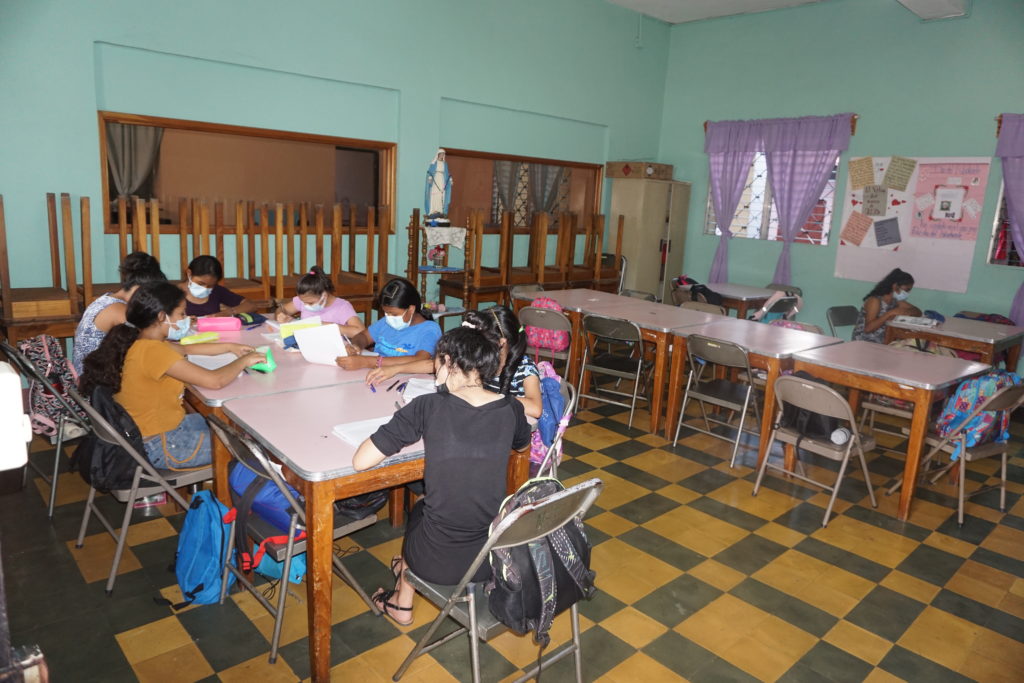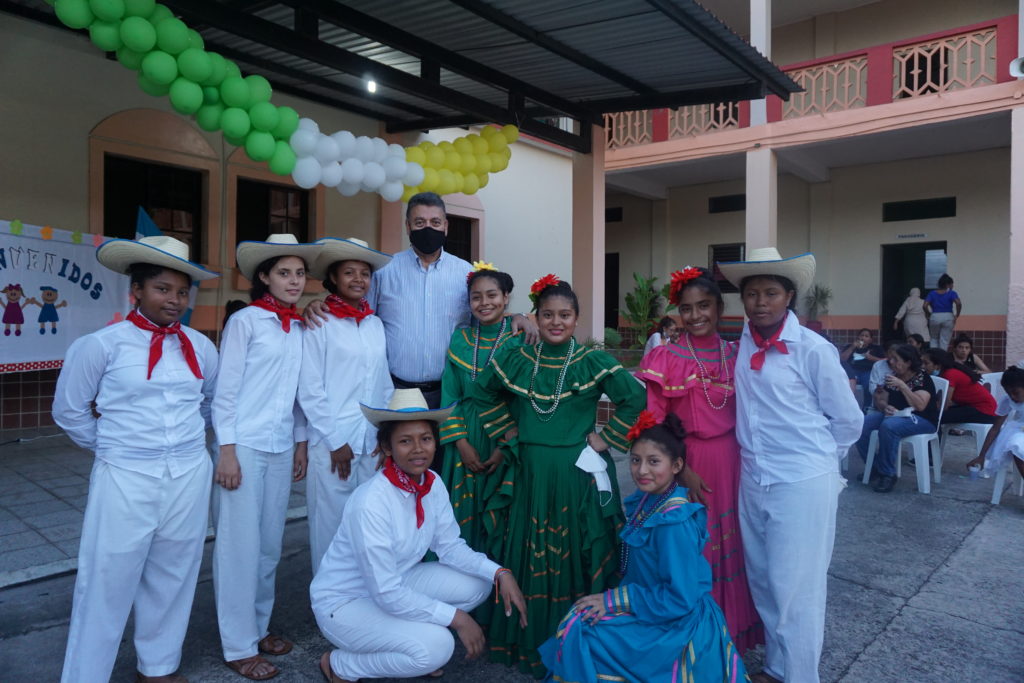facts about the Maria Reyna Home:
- Ages Served: Girls of all ages
- Facility Description: The building consists of five well-maintained dormitories.
- Education: The girls attend local public schools, where core academic subjects are taught. At the home, they may take workshops in sewing, embroidery, baking, computer literacy and other skills training courses.
- Academic Year: The school year in Honduras typically begins in February and ends in November. Students enjoy summer break from early December through early February.
- Nutrition: The home provides nutritious meals to the girls each day.
- Medical Care: The girls’ health is closely monitored, and medical assistance is provided as needed.
- Activities: Apart from completing their school assignments, the girls help with chores around the home, which include tending the fruit and vegetable gardens outside. The home also provides ample time for recreation and games.
Nestled in northern Central America, Honduras was once home to several Mesoamerican peoples – most notably the Maya. This ecologically diverse land — with its rainforests, cloud forests, savannas, mountain ranges, and barrier reef system off the northern coast — teems with life. Its wealth of natural resources is equally impressive, including a variety of minable minerals and agricultural exports such as coffee, tropical fruit, sugar cane and lumber. Moreover, its growing textiles industry serves an international market.
The nation’s wealth of natural beauty and resources, however, belies the dire poverty in which its people live. In fact, Honduras holds the unfortunate distinction of being one of the poorest nations in Latin America. This is due in part to its longstanding political instability, social strife, and economic issues such as fluctuating export prices, rising inflation and unemployment. Other contributing factors include frequent natural disasters (hurricanes, mild earthquakes and flooding), widespread poverty, disease and inadequate education, which results in a high rate of illiteracy.
San Pedro Sula, Honduras’s industrial center and second-largest city, is no exception to these maladies. Here, the Maria Reyna Home, which was founded in 1942 as a girls’ orphanage, cares for the area’s orphaned, abandoned or neglected children. The home serves as a safe haven, away from the slum housing, hunger, disease, crime and pollution that are all-too-tragic realities in this region. Through education and moral support, these deserving girls receive the opportunity to rise above the difficult socioeconomic circumstances from which they have come.
Facts about honduras:
- Population: 10.28 million (2022)
- Languages Spoken: Spanish (official), Amerindian dialects (Garifuna, Miskito, etc.)
- Poverty Rate: 48.2% (2022)
- Unemployment Rate: 8.5% (2022) with high underemployed



